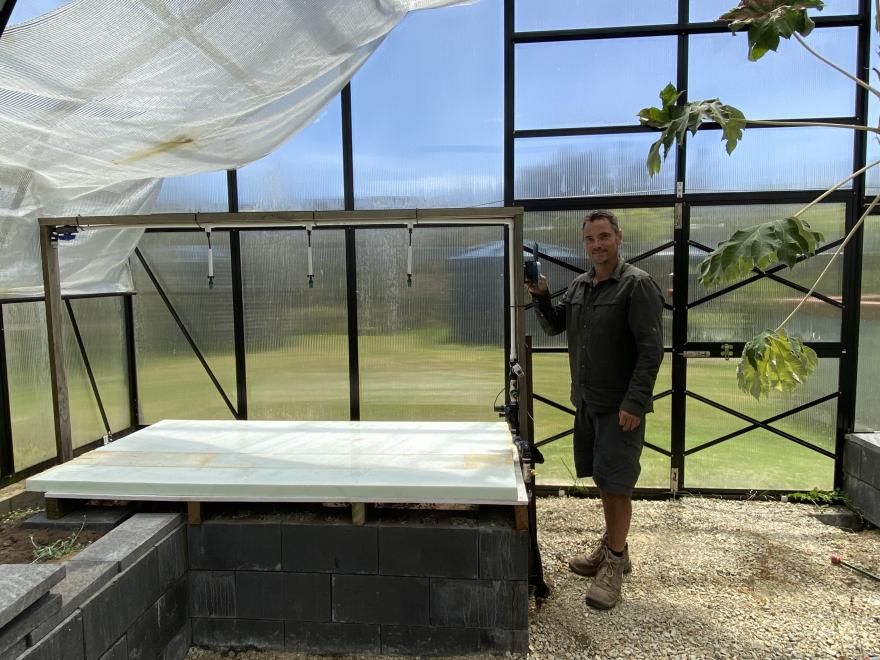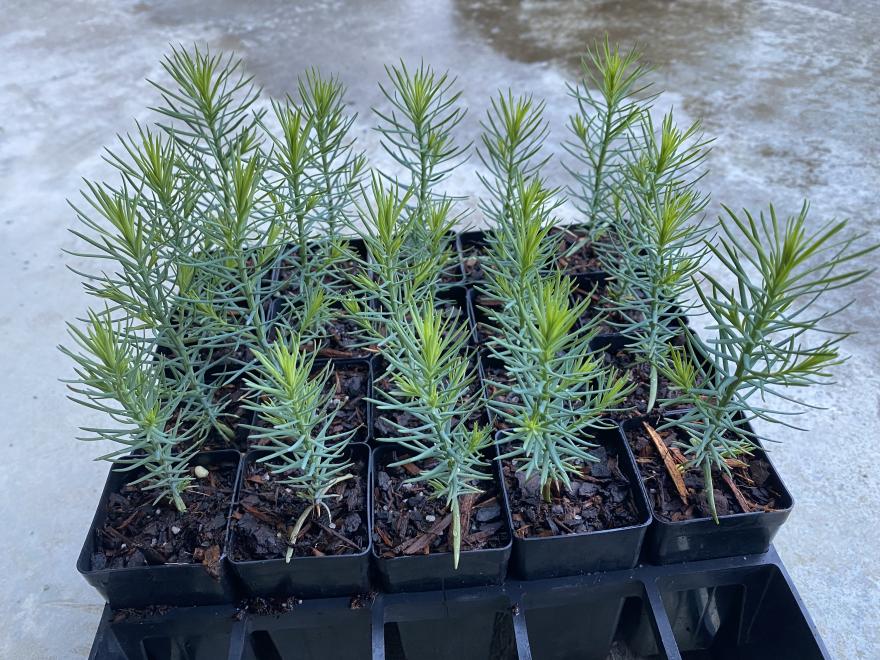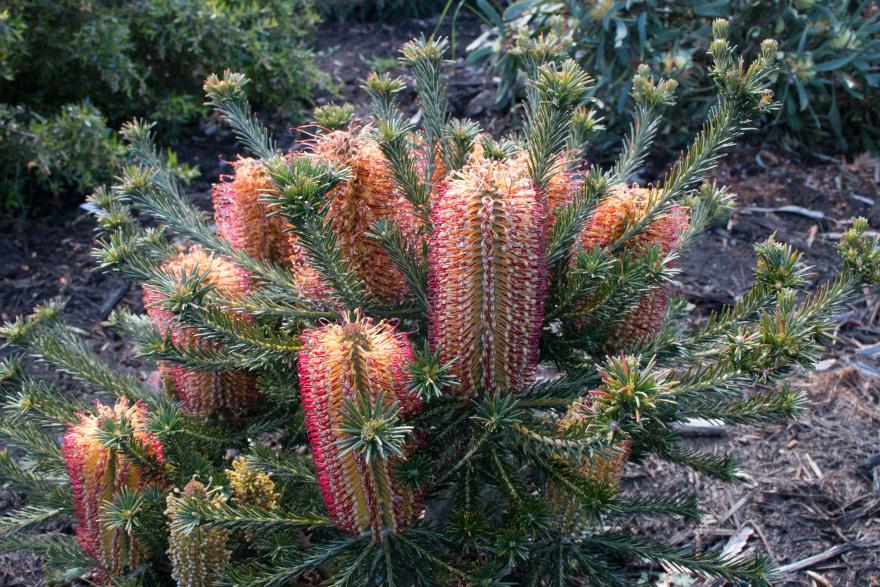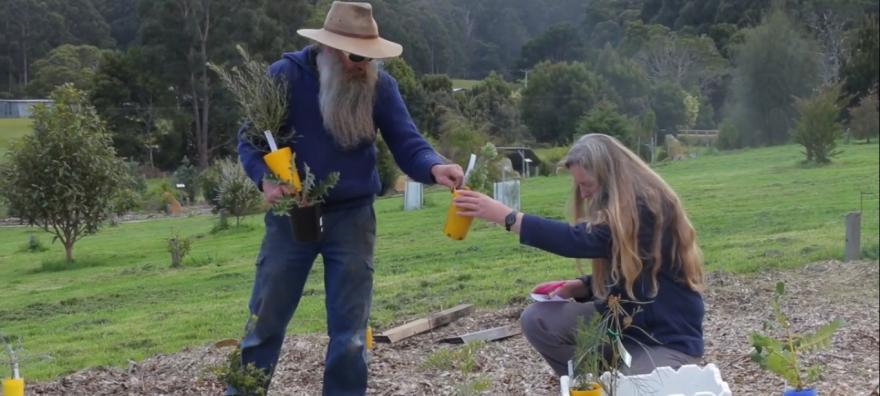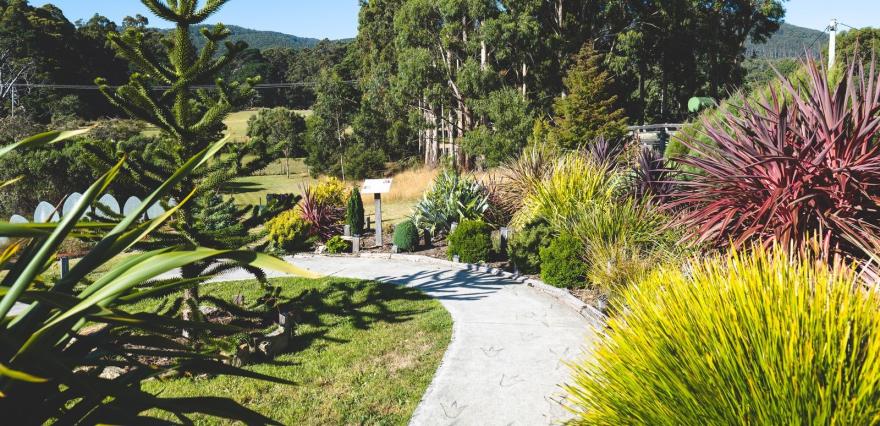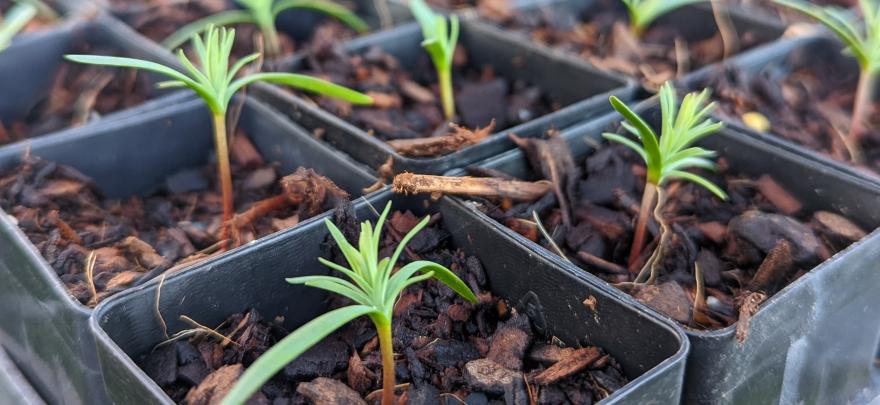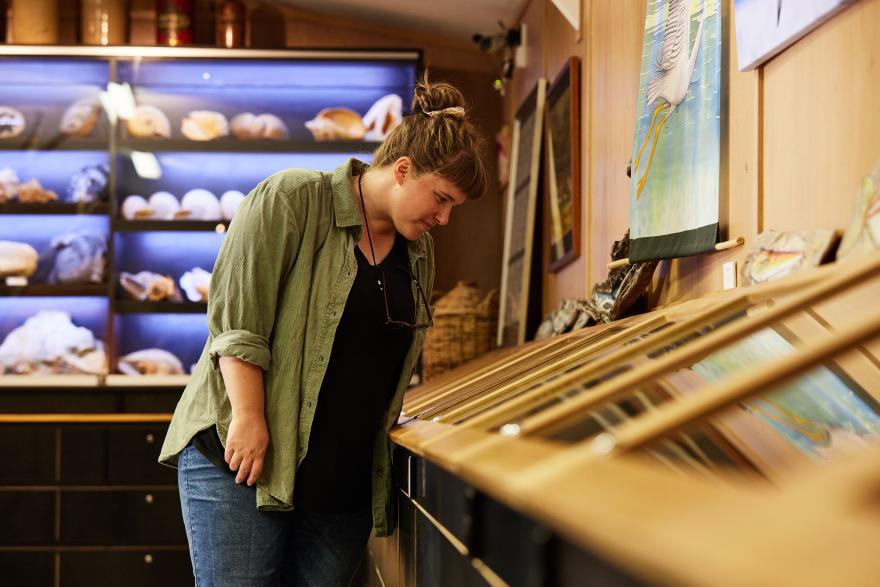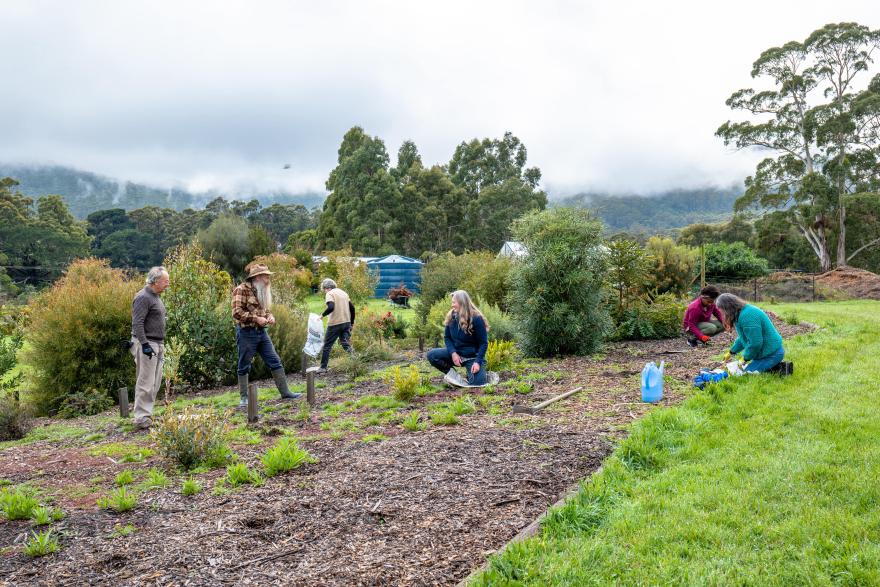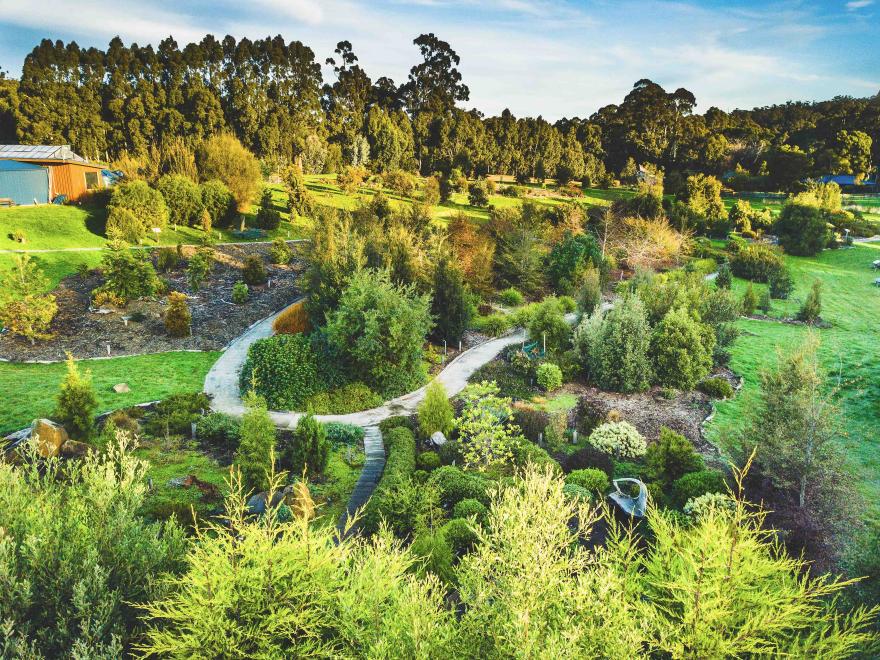The project is funded by Botanic Gardens Conservation International (BGCI) in 2021 as part of an initiative in partnership with ArbNet.
This project is a collaboration with Bedgebury National Pinetum and Forest in England who are currently working on the conservation of this species with the Mulanje Mountain Conservation Trust and the Forestry Research Institute of Malawi. The aim of this project is to grow specimens to reproductive age and harvest the seed for distribution to other institutions in Australia and hopefully eventually back to Malawi.
The Widdringtonia whytei story
The genus Widdringtonia is an African genus of the Southern Cypress family (Cupressaceae: Callitroideae) comprised of 4 species (W. nodiflora, N. schwarzii, N. wallichii (formerly W. cedarbegensis) and W. whytei. Their closest relatives are the Australian Callitris and Actinostrobus. We are successfully growing two of these 4 species here in the Inala Jurassic Garden (W. schwarzii and W. wallichii), both of which are now producing both male and female cones.
In 2019, Dan Luscombe, Collections Manager for Bedgebury National Pinetum and Forest (Kent, UK) was visiting Australia and called into the Inala Jurassic Gardens. Dan was instrumental in designing nursery trials to propagate and grow and re-forest areas of another critically endangered Widdringtonia species, the Mulanje Cedar (W. whytei) which is endemic to Malawi, Africa as part of a Darwin Initiative Award program through Botanic Gardens Conservation International (BGCI) and two Malawi-based Conservation and Forestry Trusts. While the Bedgebury team was able to germinate the seed, the seedlings could not be grown successfully because of the climate conditions in the UK. It is believed that this species is now functionally extinct in the wild, with no remaining cone-bearing plants from which to obtain more seed, so the race is on to save the species from extinction before the germination rate of the stored seed falls below viable limits.
Dan was very interested and excited to see how successfully our two Widdringtonia species were growing in the Jurassic Garden and asked if we would be interested in receiving some of Bedgebury’s stored W. whytei seed to undertake germination trials and grow insurance specimens as a collaborative project. Imagine our delight at being given this amazing opportunity to collaborate with such a major botanic institution on such an important project! Because of Australia’s very strict biosecurity measures, we understandably couldn’t just bring seed into Australia without the appropriate permits and biosecurity procedures, and because of its rarity, W. whytei is not a recognised species on Australia’s plant import register, so we had to start from first principles to register the species and gain authorisation to import the seed with Biosecurity Australia. This has been a long, complicated process which has been further complicated by Covid restrictions, but we have persevered knowing the germination rate of the seed is lessening every year.
Our application was successful and are currently in the process of completing the permits required for Bedgebury to provide the appropriate phytosanitary certificates to import the seed. As part of this process, Inala Jurassic Garden has also successfully registered as a Seed Importer (Tasmania) via Biodiversity Tasmania. In further breaking news, we have just been advised that our application for financial assistance through a BGCI/ArbNet Partnership Programme Grant to collaboratively work with Bedgebury on this project was successful. We will provide updates on the project throughout the year as we reach major milestones, with the end result hopefully producing insurance specimens of this incredibly rare species and planting them in the Garden.
Updates
November 2023: Jonathan successfully germinated 43 seeds, which has been a great outcome so far. The germination rate for this species is usually around 40%.
September 2023: Germination trials have now commenced with 100 of the seeds. Inala is working in partnership with nurseryman and expert propagator, Jonathan Esling on these germination trials.
July 2023: we are excited to announce that 200 very precious Widdringtonia whytei seeds arrived at Inala after an epic journey. We wish to extend a very big thank you to the team at Bedgebury National Pinetum and Forest for their tenacity and assistance in making this happen. The seeds were cold stratified at Inala over the remainder of the winter months.
April/May 2023: Propagation heat bed constructed for germination trials once the seeds arrived at Inala.
June 2022: germination trials of Widdringtonia schwarzii produced good results.
Find out more about the Widdringtonia whytei
Smith, P. (2015): Saving Malawi’s National Tree: BGjournal , Vol. 12, No. 2, pp. 34-36. Published by: Botanic Gardens Conservation International (BGCI) [to read, right click and select 'Open in new tab']
Bayliss J., Makungwa S., Hecht J., Nangoma D., and Bruessow C.(2007): Saving the Island in the Sky: the plight of the Mount Mulanje cedar Widdringtonia whytei in Malawi. Oryx Vol. 41 (1) pp 64-69.
Mitrani, L.M. (2017): Reproduction and Establishment of Two Endangered African Cedars, Widdringtonia cedarbergensis and Widdringtonia whytei. Masters Thesis
